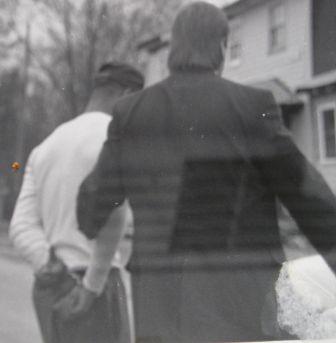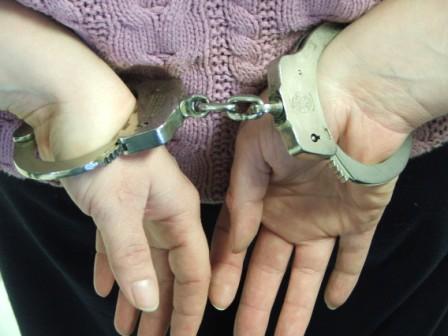Stop and Frisks: Constitutional or Not?
Stop and Frisk worked its way into the recent debate between two presidential candidates, neither of whom, it seems, totally possessed a full understanding of the concept. One candidate said the practice was unconstitutional with the other claiming it is indeed allowed per U.S. Constitution. So who was right?
Well, let’s first learn a bit about Stop and Frisk. Here’s how it all began, and it’s nothing new, not by any means.
In the mid 1960’s, when I was still not quite a teenager (yes, this law has been on the books for a long, long time), a Cleveland, Ohio detective named McFadden saw two men, strangers to the area, walking back and forth in front of a store. On each pass the men stopped to look into the store window. McFadden watched the men while they made a dozen or so trips past the storefront. After each trip by the business the two men stopped at the street corner to chat for a minute or two. Soon, a third man met the two men at the corner.
Detective McFadden, being quite the observant and proactive officer, had seen enough to send his “cop radar” into overdrive. He was certain the men were “casing” the place, waiting for just the right moment to rob the store owner. So McFadden approached the three men at the corner, identified himself as a police officer, and then asked for their names. Someone mumbled something but no names were offered. Sensing things could quickly go downhill, McFadden grabbed and spun one of the mumblers around (John W. Terry) and patted the outside of his clothing, feeling a pistol in the man’s coat pocket.
Unable to retrieve the pistol on the street while keeping an eye on all three potential robbers, the detective ordered the men inside the store where he had them face the wall with their hands in the air. McFadden retrieved the pistol from the first suspect’s coat and then patted the clothing of the the other two men. During the searches McFadden located a second pistol. As a result, the three men were detained and taken to the police station. The two men with the guns were charged with possession of a concealed weapon.
On appeal, Terry argued that the officer had violated their constitutional rights according to the 4th amendment (unlawful search and seizure). However, the U.S. Supreme Court ruled in favor of the officer, stating that his search was the minimum action required to see if the men were armed, a necessary tactic to safeguard his safety and the safety of others. And, that the suspects were indeed acting in a manner consistent with the probability of robbing the store owner.
Basically, the Court did not change or add laws to the books. Instead, they upheld that whenever possible and practicable, a police officer must obtain a warrant to conduct a search and seizure. However, they ruled, an exception must be made when “swift action” is required based on the observations of an officer.
Detective McFadden’s stop and frisk tactic has since been known as a Terry Stop. It’s a proactive tactic that prevents some crime before it happens, and it helps reduce the numbers of illegal weapons often carried by criminals. Without Stop and Frisk, bad guys have no fear of being caught carrying a gun.
The Terry Stop According to the Supreme Court ruling Terry v. Ohio
A Terry stop is defined as a brief, temporary involuntary detention of a person suspected of being involved in criminal activity for the purpose of investigating the potential criminal violation.
In order to lawfully conduct a Terry stop, a law enforcement officer must have “reasonable suspicion,” which has been defined as “articulable facts (articulable means able to explain in words) that would lead a reasonable officer to conclude that criminal activity is afoot—more than an unsupported hunch but less than probable cause and even less than a preponderance of the evidence.
A police officer may in appropriate circumstances and in an appropriate manner approach a person for the purpose of investigating possible criminal behavior even though there is no probable cause to make an arrest. Also known as the Common Law Right of Inquiry, this section of existing law permits an officer or agent to engage any citizen in a purely voluntary conversation (i.e. “May I speak with you a moment? Do you need any help? How long have you been here?”). In these cases, a citizen must be free to terminate the conversation at any time and go his or her way with no restrictions. This, however, is not a Terry Stop where an officer would conduct a pat-down of the person(s). Remember, this is a voluntary action on the part of the citizen. Terry Stops are not voluntary. In fact, Terry Stops are brief periods of actual detention that may include handcuffing the detained subject for the safety of the officer and others.
*The preceding three paragraphs are excerpted, with some paraphrasing, from FLETC training material. FLETC is the Federal Law Enforcement Training Centers.
Based on Terry v. Ohio, what are officers permitted to do regarding pat-down searches?
Officers may, even without sufficient cause for arrest, briefly detain someone if…
– the officer identifies him/herself as a police officer (either by the uniform and badge, or verbally) and asks reasonable questions regarding the suspect’s current conduct.
– the officer has knowledge of facts that lead them to believe the suspect is involved in some sort of illegal activity.
– the person they’ve stopped does not immediately justify his actions in a manner that satisfies the officer’s suspicions.
Officer’s may conduct a pat-down search during a Terry Stop if they have a reasonable suspicion, based on personal knowledge of facts, that the person is armed.
The Terry Stop is a search for weapons.
Officers may not, however, go out on “fishing expeditions” under the guise of the Terry Stop. There must be facts supporting their reasons for a “frisk.”
By the way, a pat-down search is exactly as it sounds. Officers may only “pat” the outer surfaces of clothing. They may not reach into a person’s pockets unless they feel a weapon.
There is an exception to the rule, however, and that’s when an officer who has sufficient training and first-hand knowledge of narcotics packaging, “feels” what he/she suspects is a packet of drugs. The officer may then reach into the pocket to retrieve the packet. To do so, the officer must be able to testify under oath, and verify, that he/she has the sufficient experience and training that would give them the knowledge needed to identify narcotics packaging by feel. An example would be an officer who worked undercover or on a narcotics task force.
Okay, with that out of the way it’s time to visit New York City and the NYPD’s stop and frisk policy. Citizens there raised a ruckus because they didn’t believe the department’s policy met the standard of Terry v. Ohio, where an immediate action is required by the officer to protect himself or the safety of others. Nor did officers (according to citizen complaints) conduct those pat-down searches based on reasonable suspicion that a crime was about to take place. In other words, they felt that officers merely stopped people at random and when they did they searched those people, suspicion of criminal activity or not. And doing so is a direct violation of their constitutional protection against unreasonable searches and seizures.
Were the citizens complaints justified?
Many said NYPD officers simply stopped people of color merely because they were indeed people of color who just happen to be walking along the street, especially in areas where crime rates were higher than the rates in other areas.
Walking on a sidewalk in a high crime area is not in itself cause to warrant a Terry Stop/Stop and Frisk.
Manhattan Federal Court Judge Shira Scheindlin ruled that the NYPD’s stop and frisk policy of searching anyone and everyone whenever they felt like it is unconstitutional, particularly when it comes to black and Hispanic males.
Her ruling, though, does not mean that NYPD officers cannot conduct Terry Stops. What it does mean is that officers must follow the law to the letter and not detain and pat-down people without just reasonable suspicion. A person’s race, by the way, is not just cause. Basically, the judge ordered the NYPD to follow the already-established law that specifically spells out what officers may or may not do with regard to investigative detentions, AKA Stop and Frisk.
Honestly, I don’t see the problem. If an officer’s assignment is to patrol a high crime area of the city, then it should be no problem to spot people who’re engaging in suspicious activity—drug dealers, robbers, rapists, car thieves, etc. Those are the people, the folks involved in some sort of criminal activity, who warrant being stopped and frisked, if they exhibit signs of criminal activity. Not mom and pop and baby brother who’re on their way to church, school, or the grocery store. And certainly it is not permissible or even ethical to stop someone for a pat-down merely because their skin is a certain color.
NO, police officers should not target anyone based on the color of their skin. To do so is very wrong and that’s why Judge Scheindlin stepped in with her ruling, to prevent a practice of targeting people of color simply because they’re people of color.
Remember, though, Stop and Frisk/Terry Stops are still absolutely legal and constitutional, and they’re done each and every day all across the country. These stops are an essential part of both proactive and reactive policing, and they save lives.
I didn’t watch the presidential debate so I didn’t hear the comments regarding Stop and Frisk, but to be perfectly clear … Stop and Frisk/Terry Stops are absolutely and without even a smidgeon of a doubt, legal and constitutional. But officers must follow the law when utilizing those stops/investigative detentions.
Did the two presidential candidates come close to getting this right? I don’t know because, as I said, I didn’t watch and I certainly do not believe much of what I see or hear in today’s media. What I do know is that the leader of this country needs a strong, unbiased, unopinionated understanding as to how this stuff works in real life. Otherwise, they might make the mistake of thinking police, when doing their jobs properly, are doing something wrong when they’re actually doing their jobs correctly, smartly, and as allowed by the law and the constitution. So yes, the president of the United States as well as potential presidents of the U.S., should have an understanding of policing, and that understanding needs to be based on fact, not emotion or to help push an agenda.
I guarantee that politicians will want the officers charged with protecting them to be proactive and pat-down someone for weapons if that someone looks as if they may be prepared to harm them. Shouldn’t we all have the right to feel just as safe? Wait, we do have that right, and it was reinforced by the Supreme Court when they affirmed Terry v. Ohio nearly 50 years ago.
Stop and Frisks are absolutely legal and they’re absolutely constitutional. This, as current law states, is not debatable.
Stop and frisk prevents many criminals from carrying out their illegal activities. At the very least, the practice helps remove illegal guns from the hands of those who’re likely to injure or kill others.
So why tie the hands of officers …
The very men and women who could otherwise prevent you from facing this the next time you and your family visit your local mall …
*Please do not turn this article into a political discussion. It is meant as a learning tool about Stop and Frisk. Nothing more.







